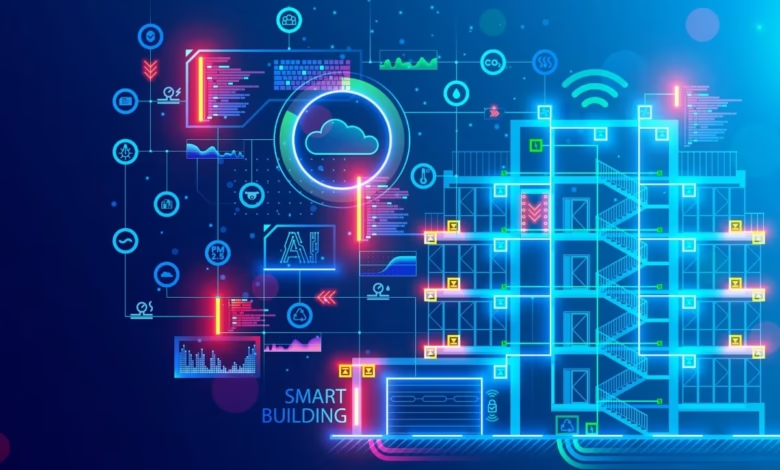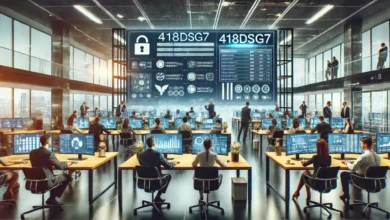Building Smarter Systems: Modern IT Development Practices

In today’s digital age, IT development has transitioned from basic software development to becoming an enterprise’s complex brain, controlling all aspects of businesses. The stigma attached to coding and deployment as two separate activities is gone. IT systems must now be agile, innovative, secure, and flexible enough to keep pace with rapid technological change.”
At its core, the goal is to create more intelligent systems. These are systems that not only perform tasks but also sift data, predict needs, and optimize results automatically. The move towards object-oriented IT development methods is a tacit recognition that technology needs to grow with its users, not just be something we consider it fair to ask them to accept.
The Evolution of IT Development
Traditional IT models were prescriptive (eg let’s do it the Waterfall way), being sequential, slow to change once you started them. Once digital transformation began to pick up speed, organizations would require faster and more amenable approaches. The result was frameworks such as Agile and DevOps, which focus on collaboration, quick turnaround times, and constant improvement.
Today, IT development is oriented towards continuous delivery, automation, and integration. Flexibility lies in microservices, cloud-native environment,s and API-driven architectures of teams. Systems are meant to be able to scale with the needs of the business, offering both function and foresight.
Core Elements of Smarter IT Systems
Building smarter systems means combining intelligent automation, data-driven design, and scalable architecture. While every organization’s needs vary, several foundational principles define the success of modern IT development:
1. Scalability and Adaptability
Systems must expand or contract seamlessly with demand. Cloud technologies, virtualization, and containerization have made this possible, allowing resources to scale automatically without compromising performance.
2. Security Integration
Cybersecurity is now embedded from the start not an afterthought. Developers apply “security by design” principles, ensuring encryption, authentication, and compliance are woven throughout the system’s architecture.
3. Data Intelligence
Data has become the backbone of more intelligent systems. AI and analytics tools enable applications to learn from usage patterns, optimize workflows, and detect anomalies before they impact users.
4. Seamless Connectivity
Interoperability between systems and services ensures efficiency. Tools like platform event trap frameworks help monitor communication between integrated platforms, identifying and resolving disruptions in real time.
Automation and DevOps: Driving Efficiency
The IT of today is growing fast towards automation. Repetitive and mundane activities like testing code, deployment procedures, server management, environment presence monitoring, etc, are increasingly managed by DevOps automation tools, which help to lessen human error and allow developers’ brainpower.
DevOps goes hand in hand with automation, as it brings together development and operations into one process. Updates can be introduced fast with CI/CD pipelines and don’t affect the quality of service.
Automation also applies to event-driven architecture, where systems are designed to respond automatically to pre-configured triggers. For example, the platform event trap traps and processes event information among multiple applications. This process helps promote synchronization among systems, which can result in faster issue resolution and increased system reliability.
Benefits of Modern IT Development
The adoption of more innovative IT practices has brought measurable advantages across industries.
- Faster Delivery: Continuous integration ensures frequent updates and improvements.
- Improved Reliability: Proactive monitoring detects and resolves issues before they escalate.
- Enhanced Collaboration: Cross-functional teams share real-time insights, aligning technical goals with business strategy.
- Cost Efficiency: Automation reduces manual intervention and infrastructure overheads.
More intelligent systems also contribute to sustainability by optimizing energy use and minimizing redundant computation, a growing priority in today’s tech-driven economy.
Technologies Fueling Modern IT Development
Several emerging technologies are reshaping how smarter systems are built and maintained:
- Artificial Intelligence (AI) and Machine Learning (ML): These enable predictive analytics, intelligent automation, and adaptive performance optimization.
- Blockchain: Adds transparency and security to transactions and data sharing.
- Internet of Things (IoT): Expands connectivity, allowing systems to interact with real-world environments.
- Serverless Computing: Simplifies deployment by removing the need to manage backend infrastructure.
- Edge Computing: Reduces latency by processing data closer to its source.
These innovations have made IT systems more autonomous, resilient, and capable of learning from real-time data streams, turning static software into dynamic, evolving ecosystems.
Challenges in Adopting Smarter IT Practices
Despite the benefits, modern IT development brings its own challenges. The complexity of interconnected systems often increases the risk of security breaches, while integrating legacy infrastructure with modern technology can be time-consuming. Additionally, maintaining skilled teams capable of managing AI, automation, and cybersecurity remains a top concern.
Scalability, data privacy, and compliance add further layers of responsibility. Tools such as the platform event trap can help mitigate some of these risks by providing better visibility and control over real-time data events. However, organizations must also invest in strong governance models and continuous staff training.
Best Practices for Building Smarter Systems
To ensure success in IT modernization, businesses and developers should align technology strategies with long-term goals. A few best practices stand out:
- Adopt Continuous Learning: Encourage teams to explore emerging frameworks and coding methodologies.
- Design for Integration: Systems should be modular and capable of seamless interoperability.
- Automate Thoughtfully: Use automation where it enhances productivity without creating dependency gaps.
- Prioritize the User: Smart systems should improve user experience as much as operational efficiency.
These practices help organizations move beyond basic functionality to systems that are intelligent, proactive, and self-optimizing.
The Future of IT Development
The next big thing in IT development is smart automation and adaptable infrastructure. And as technologies such as generative AI, cloud orchestration and quantum computing continue to mature, the focus will increasingly be on systems that are not just smart but autonomous.
Businesses will rely even more heavily on real-time analytics and event-driven automation in order to keep up with pace and security. There will be continued cross-fertilization from the platform event trap and other developments to maintain system smoothness and harmony between platforms.
Conclusion
Today’s IT development involves creating systems that think, react, and develop. With automation, the power of AI, and a scalable architecture, businesses can build intelligent, efficient, and secure digital platforms.
Empiece por adoptar las mejores prácticas: Diseño adaptable: Los usuarios no estarán solo en sus ordenadores. Asegure la accesibilidad. El auge de HTML5. Los desarrolladores se familiarizan con herramientas adicionales. Networking to the future! They can construct systems that allow innovation to flourish.
At the end of the day, more innovative IT development isn’t about a new tool or framework; it’s about a perspective that understands technology as an evolving organism, one that learns, improves, and redefines what’s possible.




